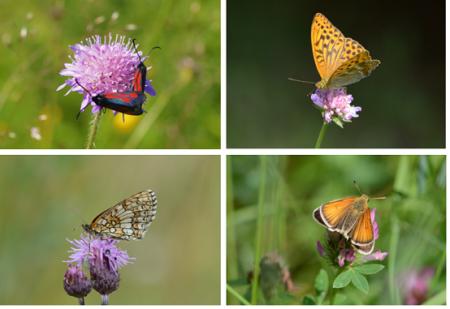Introduction

Background
Biodiversity has declined in agricultural land across Europe, and the main reasons for this are thought to be the last 100 years’ agricultural intensification and abandonment of semi-natural grasslands. These semi-natural grasslands, unfertilized and traditionally managed by mowing and/or grazing, constitute important habitats for many organisms, such as vascular plants, birds, and insects. Grazing results in selective defoliation, tramping, and nutrients from dung and urine, which create a heterogeneous environment that is of significance for the grassland to be a source of biodiversity. The management and grazing regimes of the remaining grasslands is therefore important to maintain the variety of species.
One of the groups that are negatively affected by the decline in semi-natural grasslands is butterflies; between 1990 and 2011 there was a 50% decline for 17 European grassland butterlies. The intensity in grazing has a significant effect on the presence of butterflies. When grazing is too intensive, the diversity of butterflies is shown to be low, while with a lower grazing intensity butterflies benefit from a greater heterogeneity in sward surface and from the preservation of food resources, which favours both larvae and adults. On the other hand, if the grazing intensity is too low, the grassland will eventually be covered with shrubs and trees, and the butterflies will decrease in number. Grasslands with insufficient management have also shown to have lower plant species richness than grasslands that have been continuously managed for a long time. Since plants and butterflies are dependent on a management regime like grazing, but can also be disfavoured by it, rotational grazing has been suggested as a solution for the land to be managed in a way that benefits many organism groups.
With rotational grazing, a pasture is not continuously grazed during the grazing period, but the animals are moved between pens depending on the access to grass. This gives a structural diversity, with variation in grass sward height and in the amount of nectar resources.
Aim
The purpose with this study was to get a better understanding of how true butterflies (Rhopalocera) and burnet moths (Zygaenidae) (hereafter both are referred to as butterflies) respond to rotational grazing by answering the following questions:
- What is the distribution of butterflies in relation to nectar resources and vegetation structure formed by grazing?
- How do nectar resources and vegetation structure change in relation to timing of grazing?
Responsible for this page:
Director of undergraduate studies Biology
Last updated:
05/31/17
